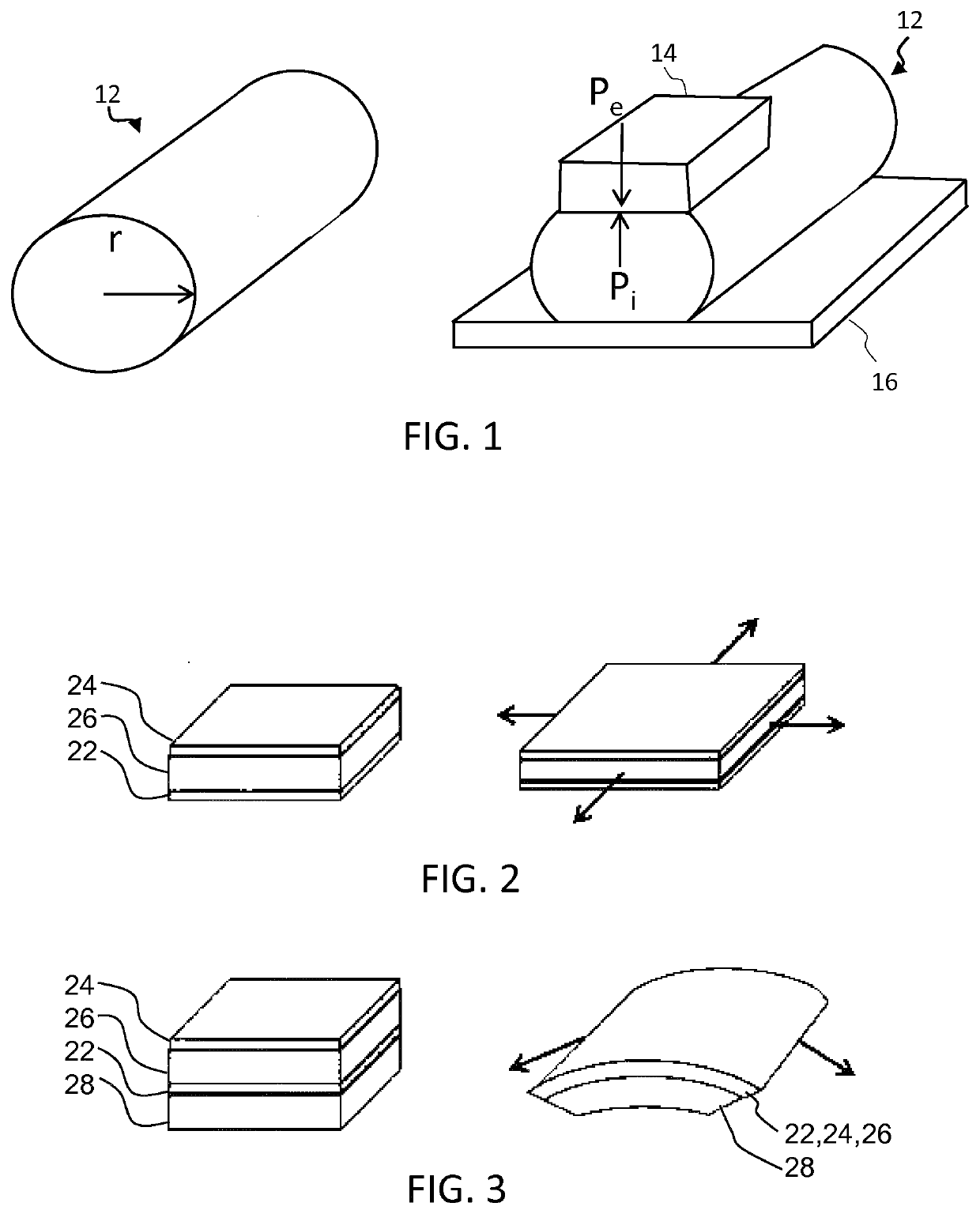Sensor positioning using electroactive polymers
a technology of electroactive polymer and sensor, applied in the field of physiological parameter measurement apparatus and method, can solve the problems of significant inaccuracy in the obtained measurement, risk of ischemia, non-linearity in the obtained blood pressure measurement, etc., to prevent unintended movement of the device and improve sensitivity.
- Summary
- Abstract
- Description
- Claims
- Application Information
AI Technical Summary
Benefits of technology
Problems solved by technology
Method used
Image
Examples
Embodiment Construction
"d_n">[0097]The invention provides a physiological sensor apparatus offering auto-adjustment of a physiological sensing surface relative to a human tissue receiving surface. The apparatus includes an electroactive polymer (EAP) structure, operable to perform actuation and pressure sensing simultaneously, via application of an electrical signal composed of superposed actuation and AC sensing signals. Actuation enables controlled adjustment of the positioning of a sensing surface against the tissue receiving surface. Sensing provides a simultaneous real-time measure of the magnitude of a returning force applied to the sensing surface by the receiving surface. This returning force provides feedback on the state of positioning of the sensing surface. A controller is adapted to adjust the actuation signal in dependence upon the sensing data, to thereby adjust the positioning of the sensing surface in real-time.
[0098]In embodiments, the returning force may in addition provide a direct or ...
PUM
 Login to View More
Login to View More Abstract
Description
Claims
Application Information
 Login to View More
Login to View More - R&D
- Intellectual Property
- Life Sciences
- Materials
- Tech Scout
- Unparalleled Data Quality
- Higher Quality Content
- 60% Fewer Hallucinations
Browse by: Latest US Patents, China's latest patents, Technical Efficacy Thesaurus, Application Domain, Technology Topic, Popular Technical Reports.
© 2025 PatSnap. All rights reserved.Legal|Privacy policy|Modern Slavery Act Transparency Statement|Sitemap|About US| Contact US: help@patsnap.com



